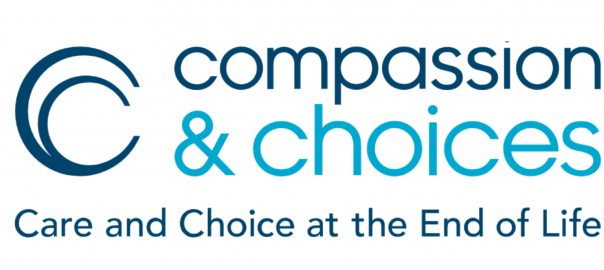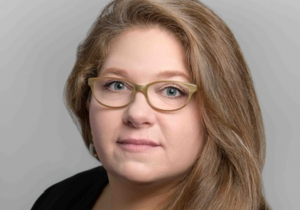
How Many More People Will Suffer Needlessly if Lawmakers Don’t Act Next Week
Over the last six years, 21 New Yorkers have died while advocating for lawmakers to pass medical aid-in-dying legislation in the Empire State.
Medical aid in dying allows a terminally ill, mentally capable adult with six months or less to live to request a prescription from their doctor they can take when their suffering becomes too great to bear and die peacefully. It is legal in 10 states, including our neighbors in New Jersey and Vermont, and Washington, D.C.
These advocates met with legislators, spoke at rallies and news conferences, organized family and friends, and so much more – most of them while actively dying and many of them weakened from treatments. Many of these brave people became friends.
Some lawmakers tell me it’s hard to talk about death and dying. It is.
But there are things that are much harder, like hearing about a friend’s horrific death, suffering needlessly in their final hours, days and weeks. It’s worse to hear it over and over again, when I know that lawmakers had the power to prevent these needlessly horrific deaths.
These special people will always hold a place in my heart and my work is in their memory.
Susan Barra, Lisa Britteri, Youssef Cohen, Zachary Cohen, Jacques D’Amboise, Bonnie Edelstein, Ayla Rain Eilert, John Flynn, Joan Grundrum, Joan Haberman, Barbara Hammer, Gene Hughes, Bernadette Hoppe, Jay Kallio, Dr. Robert Milch, Jennifer Milich, Sara Myers, Deborah Panitch, Anne Allbright Smith, Jim Wiggins, and Fay Hoh Yin.
It’s also really hard to explain to dying people and their families that their lawmakers won’t talk to them – or me – about this bill. And it’s beyond hard to watch a loved one suffering – often with pain that cannot be controlled even with the best hospice care – and beg for this option. And then watch them die, without having the option.
This Spring, I worked with an amazing New Jersey teacher, Anne French, who was able to access medical aid in dying after 10 years of struggling to live with debilitating motor neuron disease similar to ALS plus movement disorders like Parkinson’s disease. Anne told her husband every night, “If I wake up choking and die, I want you to know that I love you.” When Anne got the medical aid-in-dying prescription, she told me that she didn’t have to worry about that anymore. Anne’s husband texted after she passed away to say that Anne “was at peace” at the end.
At the same time, I was working with a 24-year-old artist, ballet dancer and certified yoga instructor in Manhattan, Ayla Rain Eilert, and her family. Ayla was receiving hospice care for terminal tongue cancer – after every possible curative treatment, including a combination of chemotherapy-radiation, and two rounds of immunotherapy, had failed to cure the disease – at a top metro area hospital with a world-class palliative care unit. During the last few days of her too-short but brilliant life that ended on April 2, her mother Amy said: “We don’t have the medical tools to give her the peace she needs. When she wakes up in the middle of the night, she cries out in agony for hours.”
No one expected that Ayla’s dying process after her cancer diagnosis last September would be as brutal and rapid as it was. I spoke to her on some of the last days she could speak. Ayla suffered the most horrible death that I have ever heard of. By the time she died, the tongue cancer had spread to 13 places in her body, with significant masses in her nasopharynx, neck, back, lungs, ribs and buttocks, and her athletic body of 127 pounds had shrunk to a skeleton-like figure of 80 pounds. She was clawing at her neck, begging every health care professional who treated her for the option of medical aid in dying.
What infuriates me the most is that this health care institution, which is close to the New York-New Jersey border, serves people from both states. Terminally ill New Jerseyans receiving care go home knowing that they have the peaceful option of medical aid in dying when their suffering becomes too great. Dying New Yorkers return home afraid of what’s to come, begging for the option to no avail.
Anne French, the New Jersey teacher who got to die peacefully thanks to her state’s medical aid-in-dying law, used to teach her students about the significance of borders. She had them envision, for example, how life was different on opposite sides of the border between North and South Korea. In one of her last trips from home before she died, Anne filmed a selfie video crossing the Delaware River Bridge and stopping at the sign that said, “Welcome to the Garden State.” Given her fear of suffering when she died, Anne was profoundly grateful that medical aid in dying was available on her side of the border.
The Manhattan-based ballet dancer Ayla deserved peace at the end of life. Her family shouldn’t have had to experience the horror of Ayla suffering at the end as she begged for unanswered help to end her pain. It shouldn’t have mattered what side of a bridge between two states she lived on.
How can New York lawmakers hear countless stories of this kind of suffering and look away? That’s a question I’ll never be able to answer.
Over the last seven years, I was eager to hear from New Yorkers who were dying and wanted the option of medical aid in dying. I desperately wanted to share their stories with lawmakers. Now, 21 deaths later, I fear those phone calls. But they still come regularly.
Here’s a very simple question for lawmakers: How many more of your constituents need to suffer as they die before you will act?
Corinne Carey is Compassion & Choices’ Senior Campaign Director for New York and New Jersey. She lives in Troy, NY.

